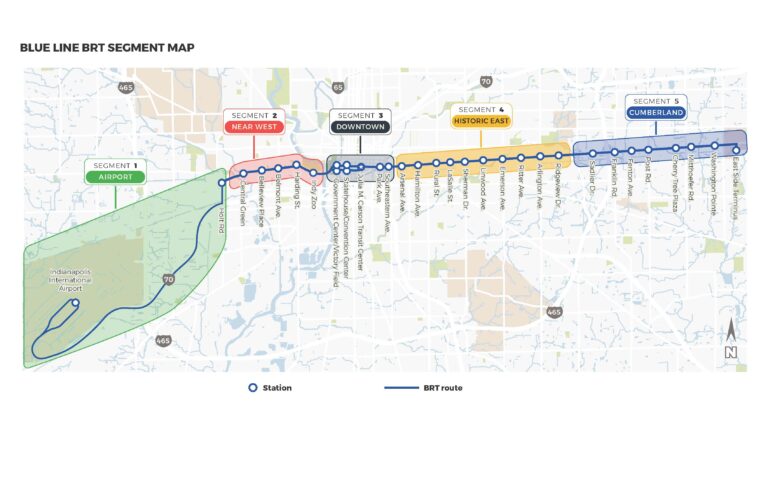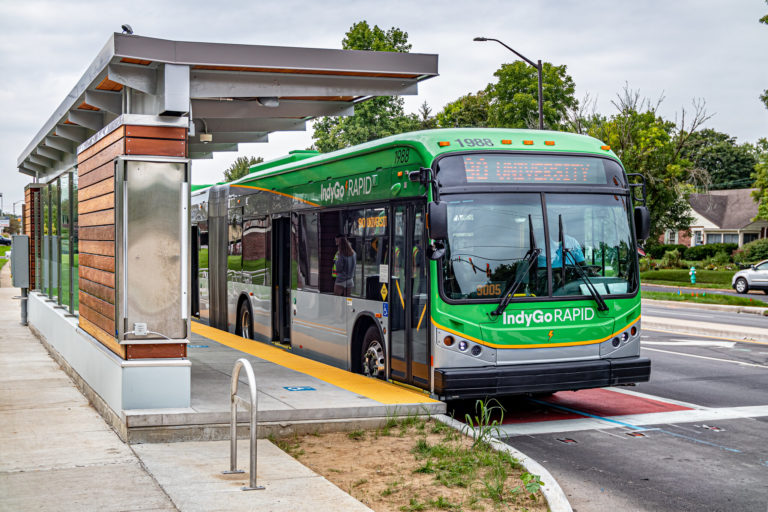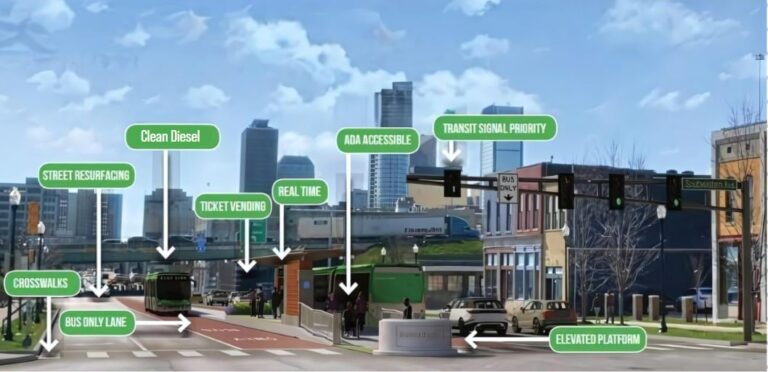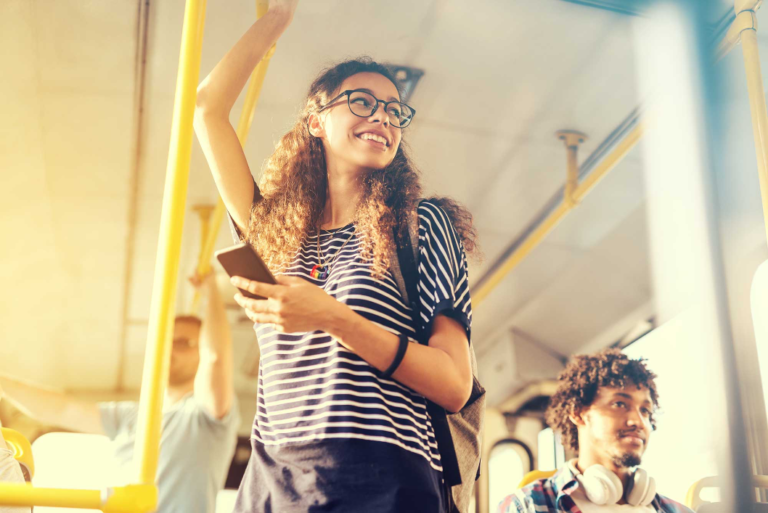If you SEE Something, SAY Something!
Learn More
IndyGo’s Blue Line is the third phase of our far-reaching transit-system re-engineering project that we call Bus Rapid Transit (BRT). The project has now reached 100% design completion after a thorough planning and design process, as well as careful consideration of community feedback and stakeholder guidance. BRT will change the way you think about public transportation in Indianapolis — especially to and from the airport.
Watch the video to travel along the corridor with us by car AND by drone! The footage is organized by segments and features the 24-mile Blue Line corridor from the Indianapolis International Airport to Cumberland before construction starts, highlighting each station location along the way. Feel free to skip around and find the area most relevant to you.
Designed specifically to make commuting convenient for passengers — with fast, frequent operation — the Blue Line is poised to provide better access to work, education, healthcare, restaurants, entertainment and shopping. It offers an equitable alternative to driving for people of all ages and serves as a cornerstone of transportation options for Indianapolis and central Indiana.
The Blue Line is the next stage of our BRT system, providing increased frequency, reliability, comfort and convenience at a fraction of the cost of light rail. But unlike far-spaced light rail, the permanence of BRT infrastructure along the corridor supports increased private investment, contributing to increased economic opportunity and quality of life.
This is more than transit. The Blue Line is a massive infrastructure project, with more than half of the budget addressing the condition of the roadway, pedestrian facilities and drainage. The Blue Line will follow IndyGo’s current Route 8, along Washington Street from Cumberland west to the Airport. With the Blue Line, local route improvements, and the density of the corridor, the Blue Line will extend the rapid-transit benefits to communities and neighborhoods all along its path.

The Blue Line will provide rapid transit along Washington Street between Cumberland and the Airport, using I-70 west of Holt Road. Service will replace and improve the existing Route 8, providing fast, frequent and reliable transit service for its entirety of 24 miles.
Stations: 30
Station Spacing: ½ – 1 mile
Distance: 24 miles
5% Design – End of April 2018
10% Design – August 2018
30% Design – January 2019
60% Design – March 2022
90% Design – November 2023
100% Design – September 2024
NEPA Approval – January 2024
Final Design – Q3 of 2024
FTA Grant Agreement – Q1 of 2025
Construction Start – Q1 of 2025
Construction End and Blue Line Opening – 2028

The rapid Blue Line will increase convenience, frequency and reliability, while improving travel times and decreasing wait times.
The 60-foot articulated, clean diesel Blue Line vehicles work seamlessly with rapid transit operation on IndyGo’s BRT lines, with doors opening on either side of the bus.
Instead of bike racks on the front of the bus, Blue Line buses have onboard bicycle storage, meaning those with a bicycle should board at the door nearest the bike storage area. New level boarding platforms allow you to roll your bicycle on and off with ease.

IndyGo reimagined the conventional “bus stop” with specific attention to making the experience convenient for passengers and ensuring fast and frequent operation. The Blue Line’s new rapid transit stations feature:

A Blue Line rapid transit vehicle will arrive at each station approximately every 15-20 minutes during peak service. All stations involved with the project will be exclusive to this route.
Features such as pre-board ticketing get you on the bus quickly, while transit-only lanes and signal priority at busy intersections allow the Blue Line to maintain its speed and frequency when other vehicles are being delayed by congestion or traffic incidents.
Riding the Blue Line is a more efficient, more convenient IndyGo experience — with a rapid transit emphasis on “go.”
Nearly all the neighborhoods along the Blue Line corridor were once served by streetcars and/or the interurban, and the urban form of these neighborhoods were influenced — and often driven by — these transportation modes. The Blue Line replicates this service. Connecting the City of Cumberland, Downtown Indy and the Indianapolis International Airport will help bring the community together and return it to the bustling, thriving days of the past.
Aside from transit travel time and safety improvements, the Blue Line is a massive infrastructure project, with more than half of the budget addressing the condition of the roadway, traffic safety, pedestrian facilities and stormwater drainage.
Transit riders start and end every trip as pedestrians. The Blue Line project includes sidewalk construction and improvements, upgraded curb ramps, new crosswalks and traffic and pedestrian signals.
Because the project runs along city streets, Indianapolis also benefits from the planned improvements, including:
Find all the resources you need by signing up for the Blue Line newsletter. From project progress and detours to special promotions, you’ll get all the latest insider scoop.
Sign up to receive a construction look-ahead, updated routes and special promotions directly to your email. Submit your email address by clicking below.